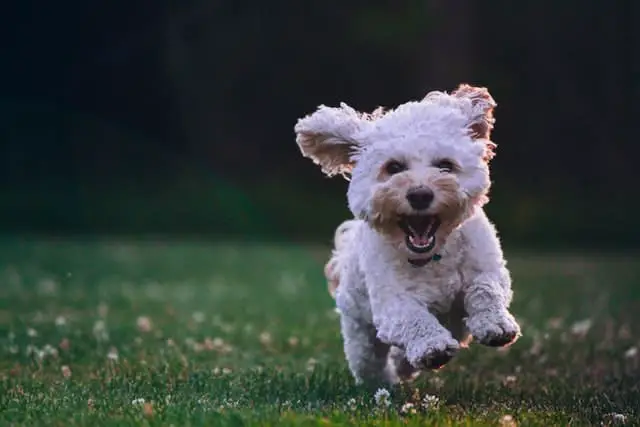
Some owners do not let go of their dog because they are so anxious that they will not be able to pick it up and put it back on a leash at the end of the walk. And that’s a shame. Teaching them the recall helps avoid this situation.
But the hardest part is, it seems, to make the dog understand what you want. How to tell them that it has to come back? It’s an order full of ambiguities …
Make yourself understood by the dog
The order of recall is often completely misunderstood by the dog. Worse: it can be understood the reverse of what it means. Let’s explain ourselves. As a reminder of a dog, most handlers simply call out (or howl!) The dog’s name.
The latter, very kindly, listens, looks at its master from a distance and expects to receive a specific command, such as: ” Rex, sit down!”, But nothing follows. For the owner, just shouting the dog’s name seems to be enough to keep them coming back. But the animal is waiting for the rest. So it does nothing when it was willing to listen to you. It annoys you! How do you get out of it?
Give a specific order to the dog
Make sure your dog sees you first. Do not gesticulate in a vacuum! If you see it’s with other dogs getting to know each other, don’t yell. Approach the dog to get its attention. Always follow the dog’s name with a command: “ Rex, come on! Or ” Rex, here!” “. Always use the same term.
In addition, the dog is very sensitive to sign language and when this is in contradiction with the words, the dog “listens” only to the gestures. When the animal, called only by its name, does not return, the owners make large gestures of annoyance. The dog then understands that its master is not happy and does not dare to come back .
Where can you teach your dog to recall?
You can, as with walking on a leash, start with a trial run at home. Clap your hands, calling it by name followed by: “Come on! Take advantage of natural situations: you are for example in the kitchen, it sees you from the hallway, you call them. It comes: congratulate them. Or you send them to its basket ten minutes before the meal and then bring them in to eat. It’s not really the “booster” but it’s a very effective primer. Repeat this often throughout the day as a game .
Then you have to get out. The first day of learning is quite tricky. Indeed, you are not yet sure that the dog will respond to the reminder and you still have to take the risk of letting them go. We have to proceed gradually. Choose for the first time a large but enclosed space, such as a large private garden. You will be able to let the dog run freely and then ask them to come back when it is at the end of the garden. There is no risk of getting lost.
The second stage is an open space but in which you can see the dog all the time and from everywhere: a meadow without trees, for example (avoid road edges). The third stage is the wood in which the dog can “disappear” behind the trees and still come back to your order. The learning will then be perfect!
How to teach your dog to recall?
Let the dog run free in the chosen space then crouch down, clapping your hands to invite them to play. At the same time pronounce its name followed by: “Come on! Open your arms to welcome them. Try to do this when the dog is not yet very far away. Congratulate them profusely on its “return”. Repeat the order when the dog is further away. Gradually increase the rappelling distance between them and you.
If, despite your prompts, it doesn’t come back, walk away in the opposite direction, pretending not to see them and losing interest in them. It will come and join you, believing that you are going to leave for good. It is especially important to avoid running behind the dog to try to catch it. It will take it as a game and escape with great pleasure. If you call your dog just before leaving and immediately put them back on the leash, it will be “disappointed”.
It will associate its return with the immediate departure. It may therefore no longer listen to you. Don’t put the leash back on just yet, so it doesn’t feel punished for coming back. Walk around a bit more, asking them to stay at its feet. Put the leash back on and walk around for a few moments. Then you have to come to the most delicate situation : the dog is very far away, with other dogs, and you are chatting with friends.
These are the extreme stimuli. A well-behaved dog must come back despite these conditions. Try to call them often at first and congratulate them on its return. Cause awkward situations.
Teacher’s advice: Never punish the dog in the recall phase
It is very important to congratulate your dog on its return, even if it has been “a while” since you have been waiting. Punishment is to be avoided, although it is tempting.
At the end of two hours of frantic races in the woods, the master thinks that the dog is tired (he himself is!), And finds it normal to return; not the dog. The master calls them, sometimes shouts, often gets angry (what could be more irritating than a dog who does not come back?) … When the dog finally decides to join its master, the latter gives them a big slap, destiny to make the animal understand that it did not come back early enough and that the next time he must come back as soon as he is asked to do so.
Now what does the dog understand? “ I came back, and now he hits me; next time I will not be back. The dog indeed associates the punishment with its return and not with the fact that it was slow to obey. As a result, the animal will respond less and less to the recall. The owner will then have to keep them on a leash at all times . The whole drama comes from this misunderstanding.
The Dog Recall in summary:

To do
- Make sure it sees you when you tell them to come back
- Give them the order precisely
- Reward them on its return
- Get them used to running at home through games
- Keep playing before you go
Not to do
- Make big gestures of nervousness
- Limit yourself to calling them by name
- Scold them for being late
- Transform this order into the “black beast” of education
- Leave as soon as you give them its leash
